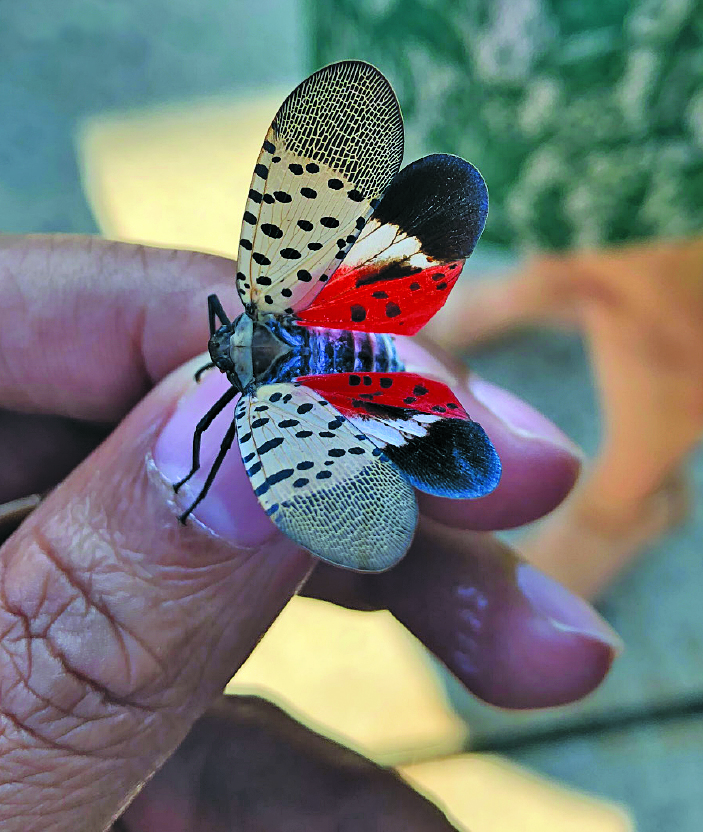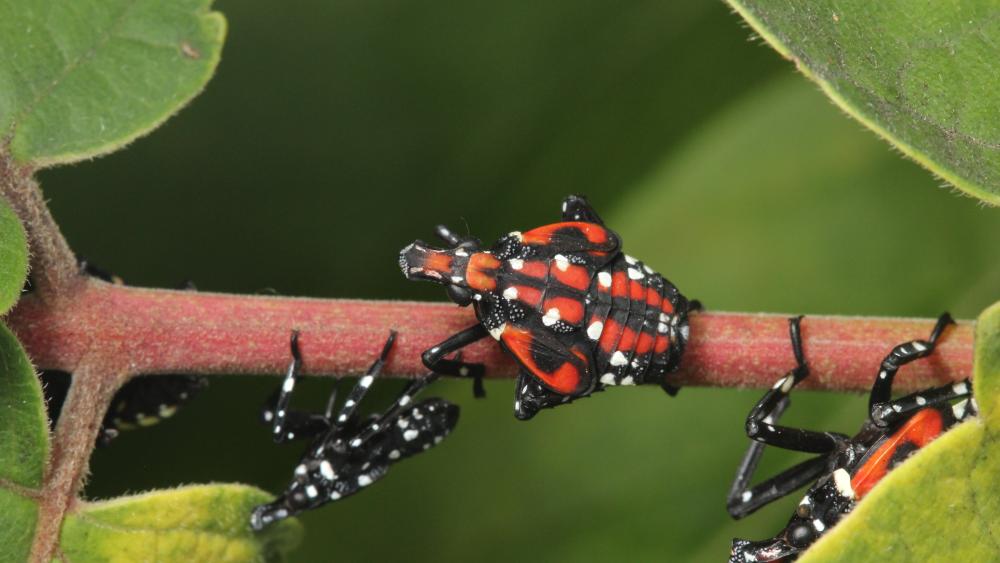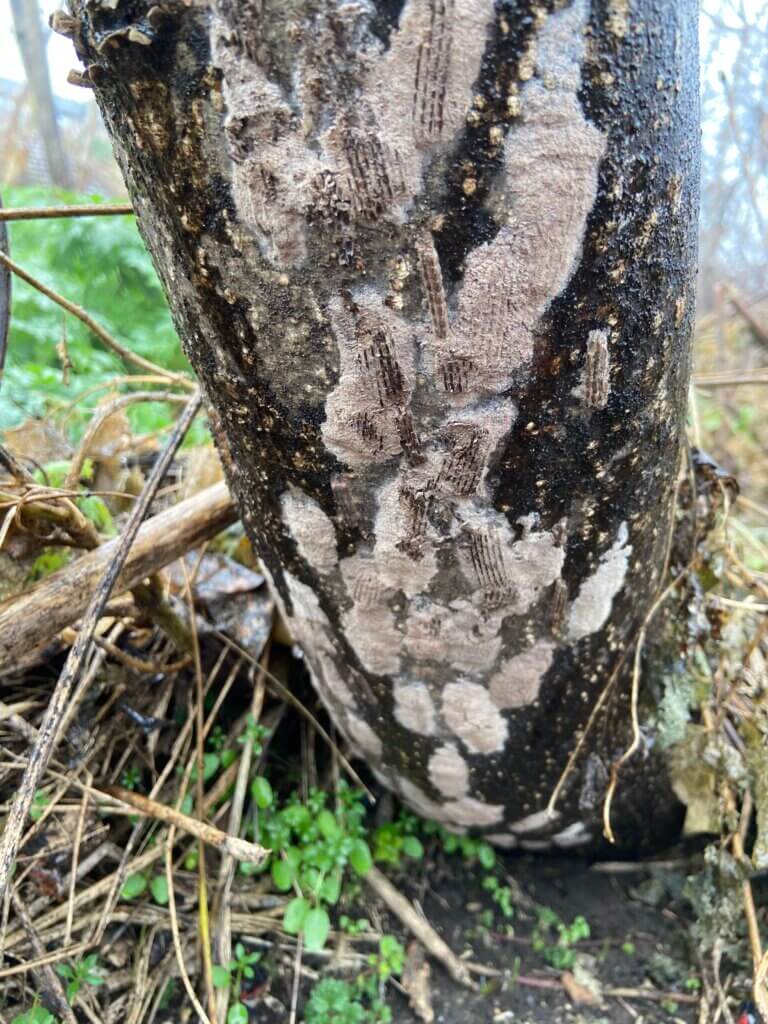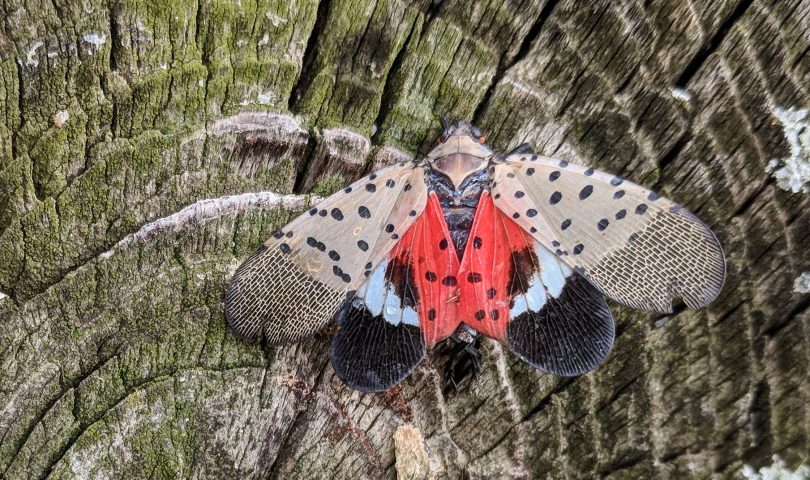MORGANTOWN — It is hatching season for the spotted lanternfly, an invasive insect from Asia.
WVU Extension entomology specialist Carlos Quesada said that while not dangerous in a physical sense, the winged pest poses a unique problem for the region.
“Because it can feed on more than 70 different plant species, the spotted lanternfly is a serious economic threat to multiple agricultural industries. Spotted lanternflies do not bite, sting, or transmit disease to humans or pets,” he explained.

The bugs were first detected in Pennsylvania in 2014 and have spread to other states, including Ohio, Maryland and West Virginia.
Quesada said the lanternfly has not been spotted in Monongalia or Preston counties.
The most recent New York State Interactive Pest Management Program map shows lanternflies in Fayette and Washington counties, Pa.; in Brooke, Mineral, Hampshire, Morgan, Berkeley and Jefferson counties; and in Maryland and Pennsylvania counties bordering the Eastern Panhandle; and Jefferson County, Ohio, adjacent to Brooke. The map shows no sightings yet in Mon, Preston, Greene or Garrett counties.
Quesada said the spotted lanternfly lays eggs from September to December, which are covered in a white, putty-like substance that looks like cracked mud to keep them through the winter. Egg masses are laid on hard surfaces, including trees, stones, patio furniture, plant containers and vehicles. They hatch during May and June.
Adult and nymph spotted lanternflies feed by sucking sap from trees through a sharp, needle-like beak, which can result in leaf curl, wilt, tree dieback and death of the tree, he said. Tree dieback caused by a high infestation of spotted lanternflies has been observed on black walnut, willow, staghorn sumac and maple trees.

The spotted lanternfly also excretes honeydew, a sugary substance, that attacks wasps and produces sooty mold fungus. Sooty mold doesn’t affect plants directly but can reduce photosynthesis, he said.
While lanternflies look a bit like moths, Quesada said they belong to a different order of insect. They are planthoppers.
WVU Extension explains that spotted lanternfly adults are about 1-inch long with grayish forewings marked with black spots and small black brick-like markings near the wing tips. The hindwings are marked with distinct patches of red, white and black.
Adults lay yellowish-brown egg masses that are covered with a gray, waxy coating.
Immature lanternflies are called nymphs. They have four developmental — instar — stages. Quesada said the first three instars are black with white spots, and in the fourth instar they are bright red and black with white spots.

Spotted lanternfly adults and nymphs often aggregate in large numbers on host plants, WVU extension said. Nymphs are known to feed on a wide range of plant species; however, adults prefer feeding and laying eggs on tree-of-heaven (Ailanthus altissima), particularly in the late summer and fall.
Quesada said before you move material out of a place where spotted lanternflies are present, check for and remove all stages of the insect. Smash or scrape the eggs downward using a stick, plastic card or putty knife into a bottle or bag filled with rubbing alcohol. Trapping can be effective in managing the nymphal stage.
Spotted lanternfly nymphs move up and down on the trunk of trees, making them easy to capture by wrapping the tree trunks with specialized bands that have an adhesive outer layer or by placing a spotted lanternfly circle trap, he said. Circle traps can be purchased from stores and online, or you can build your own. For instructions on how to make one yourself, go to https://extension.psu.edu/how-to-build-a-spotted-lanternfly-circle-trap
Report any stage of spotted lanternfly to bugbusters@wvda.us or call 681-313-9140.
TWEET @DominionPostWV




